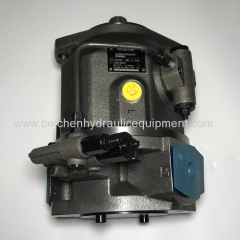What is a hydraulic pump and how do...
What is a hydraulic pump and how does it work?

A hydraulic pump is a mechanical device that converts mechanical power into hydraulic energy. It is a crucial component of a hydraulic system, which uses fluid pressure to generate force and transmit power. Hydraulic pumps are commonly used in various industries and applications, including construction, manufacturing, automotive, and aerospace.
The primary function of a hydraulic pump is to create flow and generate pressure within the hydraulic system. This pressure is then used to drive hydraulic cylinders, motors, or other hydraulic components to perform work. The pump draws in hydraulic fluid from a reservoir and pressurizes it, delivering it to the rest of the system.
There are different types of hydraulic pumps, including gear pumps, vane pumps, and piston pumps. Each type operates on a different principle, but the basic working principle involves the displacement of fluid to create pressure.
In a gear pump, two intermeshing gears rotate inside a housing. As the gears rotate, they create chambers that trap the fluid and move it from the inlet side to the outlet side. This displacement of fluid creates pressure.
Vane pumps consist of a rotor with vanes that slide in and out of slots in the rotor. As the rotor spins, the vanes create chambers that trap and move the fluid. This movement generates pressure.
Piston pumps use reciprocating pistons to displace fluid. The pistons move back and forth inside cylinders, drawing in and pushing out the fluid. This action creates pressure.
Hydraulic pumps are typically powered by an electric motor, internal combustion engine, or other power sources. They are designed to provide a specific flow rate and pressure to meet the requirements of the hydraulic system.
Overall, hydraulic pumps play a crucial role in the functioning of hydraulic systems by converting mechanical power into hydraulic energy, enabling the system to perform various tasks efficiently.
Previous:
Can hydraulic pumps be used in
Next:
Beichen Hydraulic will move to



